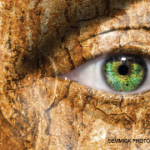I glanced at the monitor above the bed: heart rate 138 per minute, respiratory rate: 28. The normal saline was running wide open, but the Solu-Medrol, piggybacked into the main line, was dripping in at a snail’s pace. I reached up and released the flow restriction, and the milky solution swirled into the main feeder line before disappearing into Amanda’s forearm.
As her mom instinctively propped Amanda up to a fully seated position, I noticed that Amanda’s face was drifting into the vacant, dissociated glaze that patients get just prior to crashing. The blood pressure on the monitor continued to slide: 92 systolic, 90, 88. I was about to grab Dr. Benner, when the numbers plateaued and rose ever so slightly … 94, 96.
I was confident that Dr. Benner was capable of performing a pericardiocentesis (sticking a needle through the lower chest into the sac surrounding the heart and draining the constrictive fluid), but it’s a high-risk procedure and ideally should be performed by a cardiologist or vascular surgeon under ultrasound guidance. If Amanda crashed, the procedure would have to be done blindly. I’m all too aware that if the needle inadvertently pricks the heart muscle it could trigger a fatal bleed or arrhythmia. I patted Amanda’s shoulder and told her she was going to be okay.
Moments later, I stepped back as the ambulance crew wheeled a stretcher into our cubicle. Dr. Benner joined me; tucked under his arm was an unopened pericardiocentesis tray. We both watched silently as the attendants helped Amanda slide onto the transfer stretcher in a half-seated position, her O2 switched to a portable tank, the IV bags rehung on glistening stainless steel poles. On the other side of town, a team was waiting. At the last moment, just before the doors were shut, Dr. Benner climbed into the back of the ambulance with the pericardiocentesis tray.
Definitive Treatment
At Maine Medical Center, an ultrasound confirmed the diagnosis of pericarditis with tamponade features, and Amanda was whisked up to the operating room to have the fluid surrounding her heart drained under more controlled conditions by vascular surgery. There, more than a quart of straw-colored pericardial fluid was removed, a pericardial window created and a drain placed to prevent the fluid from re-accumulating to critical levels. Her blood pressure immediately rebounded to 118/78, her pulse dropped to 96. The immediacy of her death was averted.
Discussion
The term lupus—derived from the Latin word for wolf—refers to the disfiguring facial rash of lupus patients. And although it’s true that lupus rashes may occasionally be suggestive of a predator’s bite, in many patients, the skin is entirely spared. The variability of the disease is breathtaking. The diagnosis may be readily apparent at the onset of the disease, as it was in Amanda, or elude diagnosis, sometimes for years. In medical school, I was taught that lupus and syphilis were the Great Imposters, meaning their signs and symptoms mimic a host of more common disorders. On medical rounds, it was always a safe bet to include lupus in the broad differential diagnosis of any perplexing case.


